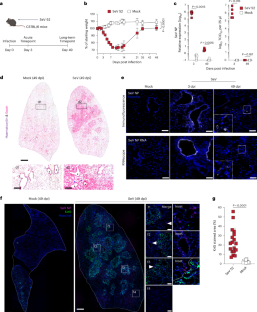2024-10-03 ノースウェスタン大学
<関連情報>
- https://news.northwestern.edu/stories/2024/10/wastewater-bacteria-can-breakdown-plastic-for-food/
- https://pubs.acs.org/doi/10.1021/acs.est.4c06645
- https://medibio.tiisys.com/106453/
ポリエチレンテレフタレートペレットが廃水コマモナスによってナノプラスチックと同化可能な炭素に分解されるメカニズム Mechanisms of Polyethylene Terephthalate Pellet Fragmentation into Nanoplastics and Assimilable Carbons by Wastewater Comamonas
Rebecca A. Wilkes,Nanqing Zhou,Austin L. Carroll,Ojaswi Aryal,Kelly P. Teitel,Rebecca S. Wilson,Lichun Zhang,Arushi Kapoor,Edgar Castaneda,Adam M. Guss,Jacob R. Waldbauer,and Ludmilla Aristilde
Environmental Science & Technology Published:October 3, 2024
DOI:https://doi.org/10.1021/acs.est.4c06645
Abstract

Comamonadaceae bacteria are enriched on poly(ethylene terephthalate) (PET) microplastics in wastewaters and urban rivers, but the PET-degrading mechanisms remain unclear. Here, we investigated these mechanisms with Comamonas testosteroniKF-1, a wastewater isolate, by combining microscopy, spectroscopy, proteomics, protein modeling, and genetic engineering. Compared to minor dents on PET films, scanning electron microscopy revealed significant fragmentation of PET pellets, resulting in a 3.5-fold increase in the abundance of small nanoparticles (<100 nm) during 30-day cultivation. Infrared spectroscopy captured primarily hydrolytic cleavage in the fragmented pellet particles. Solution analysis further demonstrated double hydrolysis of a PET oligomer, bis(2-hydroxyethyl) terephthalate, to the bioavailable monomer terephthalate. Supplementation with acetate, a common wastewater co-substrate, promoted cell growth and PET fragmentation. Of the multiple hydrolases encoded in the genome, intracellular proteomics detected only one, which was found in both acetate-only and PET-only conditions. Homology modeling of this hydrolase structure illustrated substrate binding analogous to reported PET hydrolases, despite dissimilar sequences. Mutants lacking this hydrolase gene were incapable of PET oligomer hydrolysis and had a 21% decrease in PET fragmentation; re-insertion of the gene restored both functions. Thus, we have identified constitutive production of a key PET-degrading hydrolase in wastewater Comamonas, which could be exploited for plastic bioconversion.

00188-9/asset/0b81b12a-d2ae-4b44-8566-caeabd0b0f96/main.assets/gr1.jpg)
